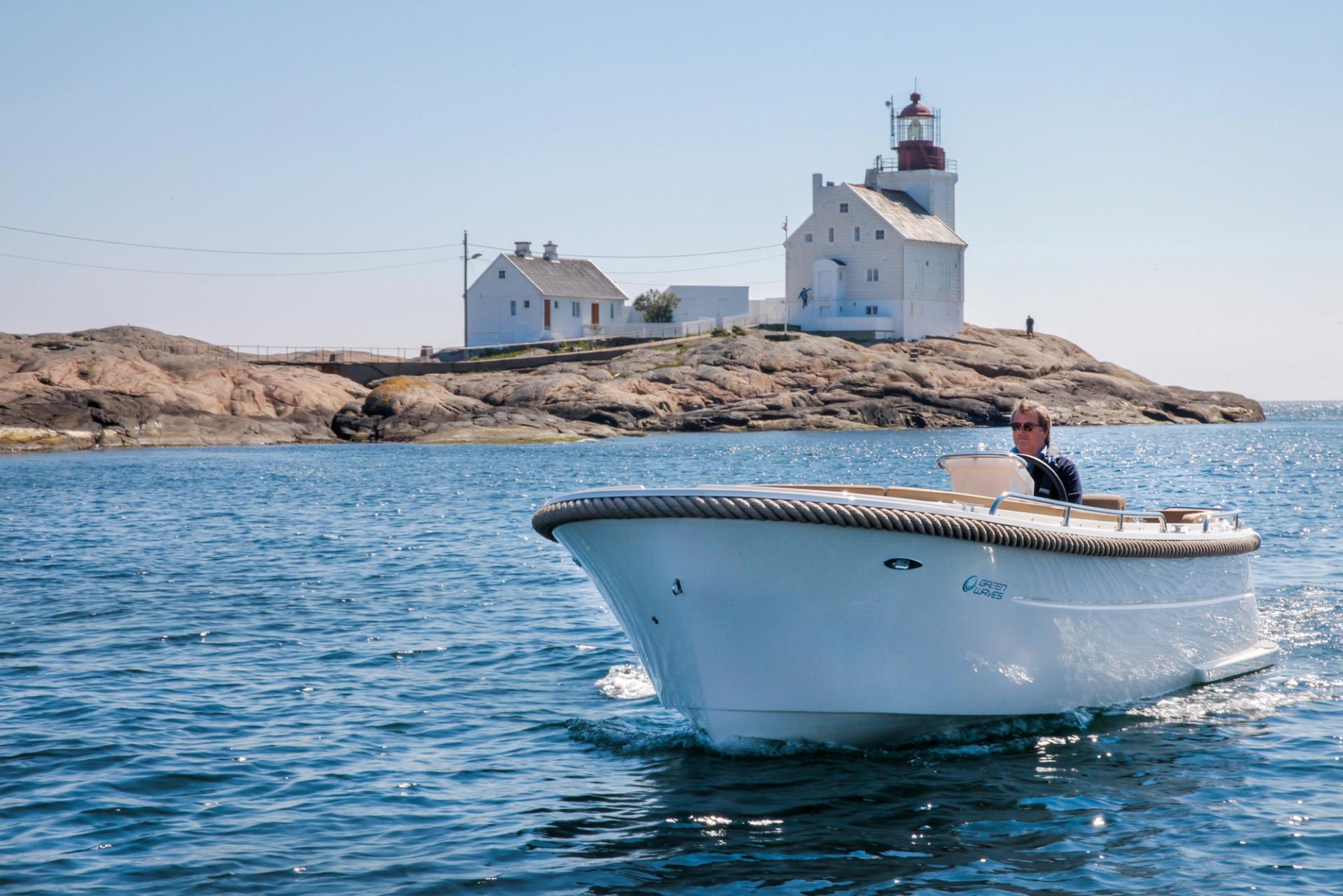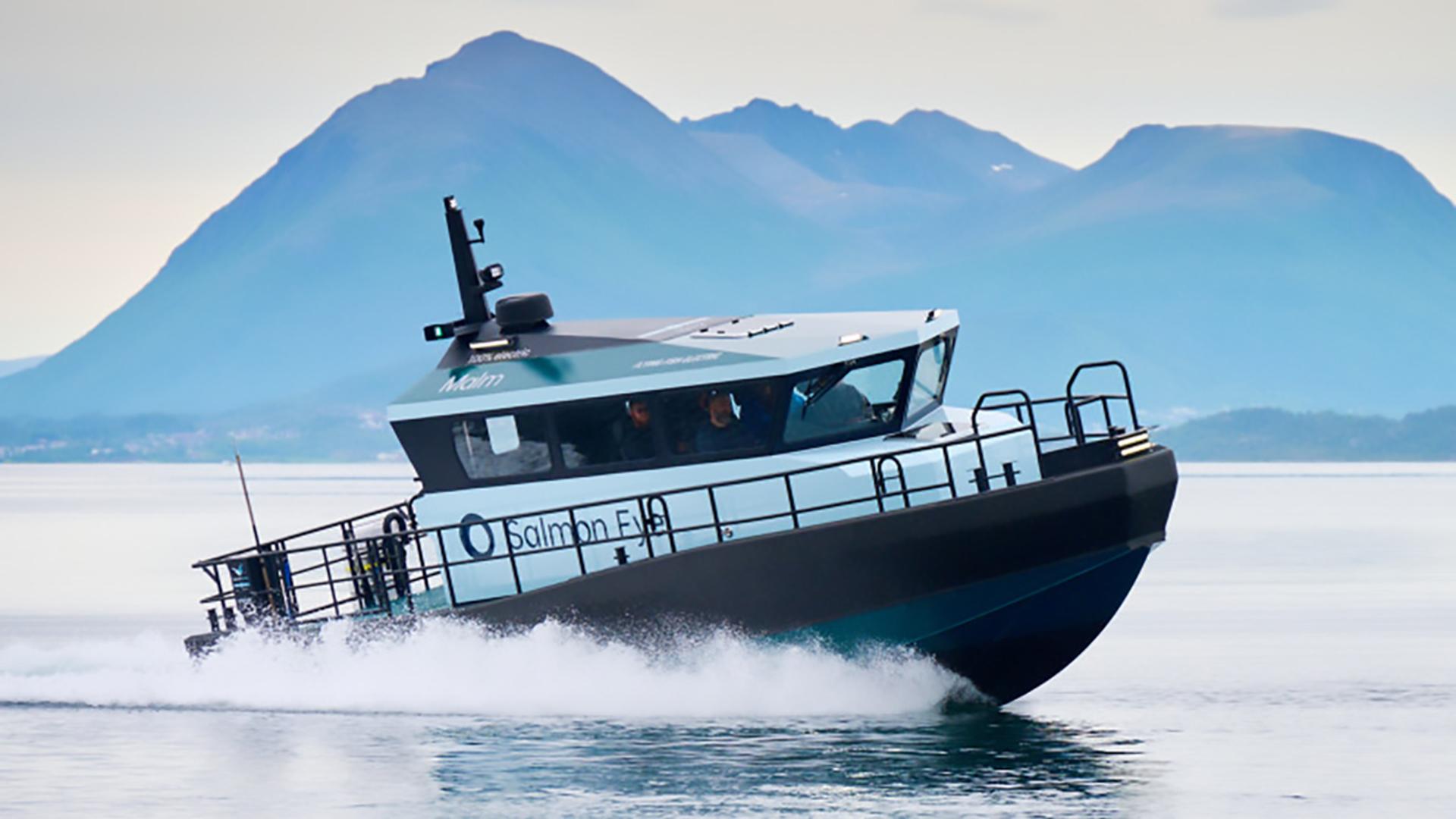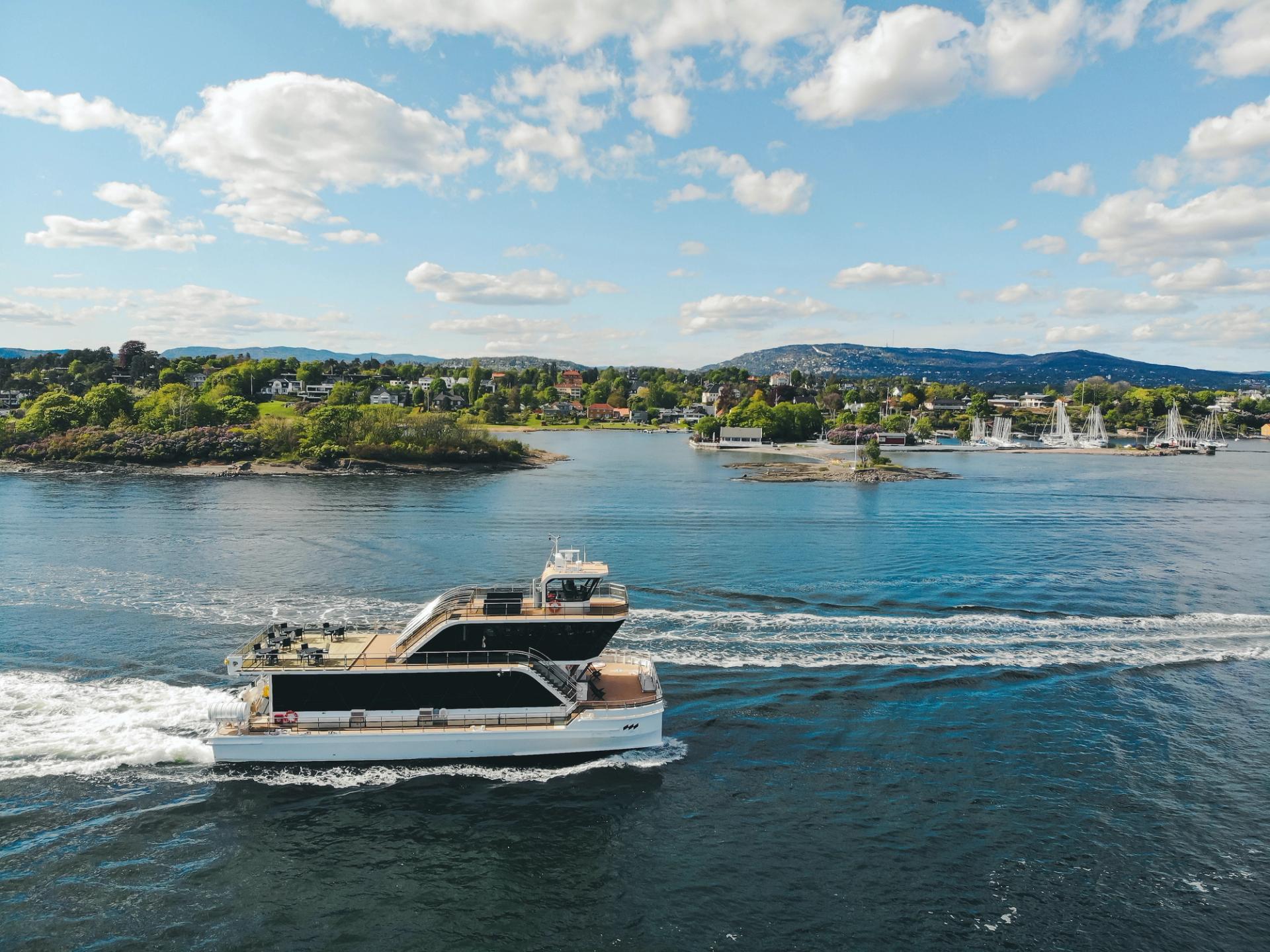

Norway’s battery industry electrifies world’s fastest, cleanest, quietest boats
Published 20 June 2023 (updated 29 Oct 2025) · 4 min read
As the world champion of EV car adoption, Norway has quickly transferred its success to the water,
becoming a global leader in electric water transport and electric leisure boats.
Not only are the electric boats eco-friendly; they are highly efficient and oh-so smart.
“Norway is leading the world in the electrification of small and medium-sized vessels,” says Nora Rosenberg Grobæk, former Head of Batteries at Invest in Norway, the official investment promotion agency of Norway. These run the gamut from family leisure boats to fast commercial workboats and globally recognised ferry projects.
She notes that commercial shipping is the only maritime sector that will probably not go fully electric due to size, weight and cost, but will use a hybrid solution instead. In most other sectors, though, battery-driven boats are proving they can compete with many diesel boats in use today.
The future of leisure boats is electric
Today, only a small proportion of leisure boats worldwide are electric, but this is changing rapidly as battery technology improves and costs decrease. Norwegians, who are avid boaters, could end up leading the world in electric boat adoption. In fact, one in five Norwegian boatowners say they would consider buying electric in the future, motivated by quieter engines and smaller environmental footprint. Similar trends are seen in Australia, Canada, coastal European countries, New Zealand and the US.
Buying isn’t the only way to access an electric leisure boat, however. A recent phenomenon is boat sharing, represented by companies such as Kruser, which gives paid members access to multiple boats in a variety of ports year-round.
“We are seeing more and more electric boat-sharing services pop up. It’s another way to provide opportunities for sustainable boating,” says Rosenberg Grobæk.

Fastest electric workboats on the water
In the world of commercial workboats, power is important. Norwegian battery technology is busting the myth that electric motors are diesel’s wimpy cousin. For certain uses, electric boats deliver plenty of muscle to do the job, with no emissions.The workboats are intended for use in diverse areas – from personnel transport, search and rescue, and surveying to ROV inspection, surface-supplied diving, and law enforcement.
One company at the forefront of this trend is Evoy, which delivers electric boat motor systems, primarily for boats of 15 to 50 ft. Both new boats can be built and existing boats can be retrofitted with Evoy’s systems. Today, 90 per cent of these are for professional use, but leisure boats are a growing segment.
“We have the fastest electric boat motors in the world,” says Leif A Stavøstrand, Evoy’s CEO. Stavøstrand is referring to Evoy’s outboard and inboard motors that have top speeds of over 50 knots and horsepower ranging from 120 to over 400. “We are showing the way for electrification at sea. It’s a megatrend that can’t be stopped,” he adds.
Lighter weight makes financial sense
Evoy supplies boat motor systems to Hukkelberg Boats, a 90-year-old shipyard on its own electrification journey. Hukkelberg now delivers a high-speed workboat made of lightweight aluminium. With Flying Fish 37, as the boat is named, the company has solved a complex engineering problem.
“Put simply, we have optimised the structure of our conventional workboats by reducing the weight while maintaining the strength. This is crucial because batteries weigh more than other forms of propulsion,” explains Øyvind Hukkelberg of Hukkelberg Boats.
“While the initial cost of going electric is higher, companies will recoup this over time thanks to improved fuel economy and lower operating costs,” he continues.
Evoy’s CEO agrees: “Going electric means companies will save money on fuel costs and save time on fuelling, servicing and maintenance. Not to mention taking significant emissions off the table.”
“We have the fastest electric boat motors in the world.”
Leif A Stavøstrand
CEO, Evoy

Digital tech increases boat IQ
Electric boats can also outperform traditional boats when it comes to smart digital technology. As Stavøstrand suggests, digitalisation is what takes Norwegian electric boats to a new level of sophistication. “We have been thinking digital since day one,” he says.
Smart boats can perform an impressive range of functions. This may include security and logistics systems, over-the-air updates and programmable motors. Remote stop, start and charging. Remote diagnostics and live monitoring from anywhere in the world. Geo-fencing to prevent theft and facilitate fleet management.
“We build an ecosystem around the hardware platform. Apps, dashboards, user interfaces – all the extra things that people expect today who are used to full connectivity 24/7,” adds Stavøstrand.
Crème de la crème of electric boats
While most electric boats do their job under the radar, Norway’s electric passenger ferries have garnered worldwide attention.
Read more below about the high-profile ferries that are setting records and winning awards.



